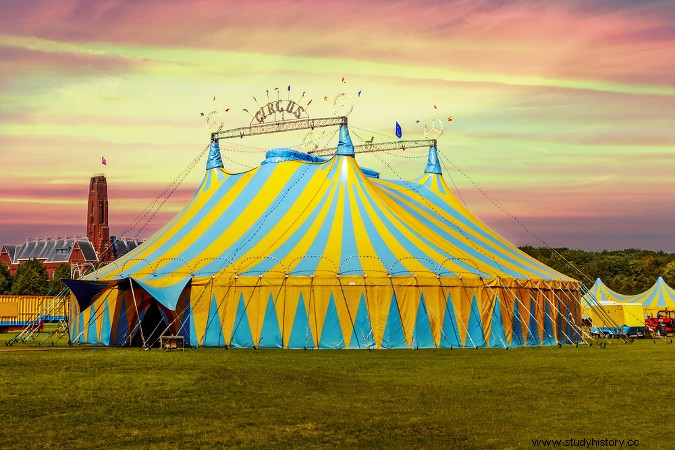
In the entertainment world, the circus occupies a privileged position among all existing forms of entertainment. Even in times of radio, TV and internet this ancient art still attracts the attention of many viewers. Circulating through spaces of erudite and popular culture , the circus art impresses by the great variability of attractions and the rich field of cultural references used.
In fact, the circus took a long time to reach the systematized form we know today. It was only in the 18th century that the arena and the best-known circus attractions were consolidated. In China, several contortionists and tightrope walkers performed for the Chinese monarchical authorities. In Rome, the so-called “Circus Maximus” was the place where the plebeian masses gathered to watch the attractions organized by the imperial authorities.
And the circus took the form we know and spread around the world
In the Middle Ages, various mummers would roam the cities demonstrating their outdoor skills in exchange for a few contributions. The first to systematize the idea of the circus as a variety show watched by a paying audience was the Englishman Philip Astley. In 1768, he created a space where, accompanied by a drummer, he performed a number of acrobatics with horses. During this period, the growth of urban populations guaranteed a good number of spectators to his show.
With the expansion of his enterprise, Astley began to rely on several other artists. Given the success of his attractions, his company began to perform in Paris. At this time, the trainer Antoine Franconi joined Astley's company. The instability caused by the outbreaks of the French Revolution in 1789 forced Astley to leave France. With that, Franconi became one of the greatest circus performers in France. Over time, the itinerant tradition of circus artists motivated the expansion of circus companies.
In the 19th century, the first circus crossed the Atlantic Ocean and arrived in the United States. British tightrope walker Thomas Taplin Cooke arrived with his group of artists in New York City. Over the years, his company grew into a large circus family that, over generations, spread the circus across the United States.
The large structure involving the circus show brought the development of new technologies to the circus world. The constant changes from city to city encouraged the creation of logistical techniques that facilitated the displacement of the shows. Such techniques, due to their great effectiveness, came to arouse the interest of high military echelons who were preparing for the conflicts of the First World War.
In Europe, until the middle of the 20th century, the circus suffered a period of great retraction. The world wars, both carried out on European soil, and the economic crises of the time imposed a great barrier to the circus arts. At the same time, the emergence of radio and television also introduced new competition in the field of entertainment.
Even with the advent of new technologies, the circus still retains the attention of crowds. Reinventing old traditions and creating new acts, the arenas around the world prove that man's artistic creativity will never be subordinated to the fascination exercised by machines. Maybe that's why we can say that “the show must go on”.
